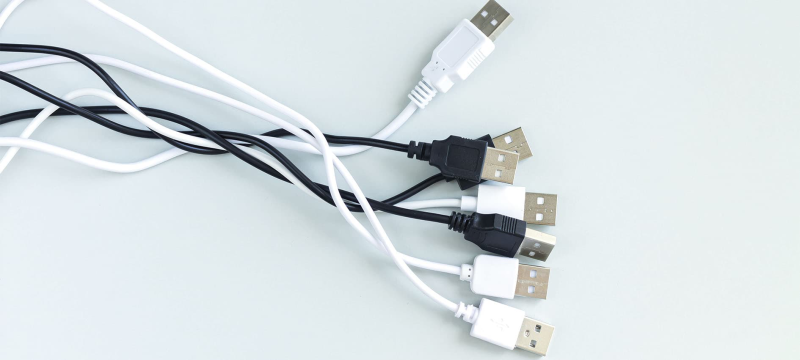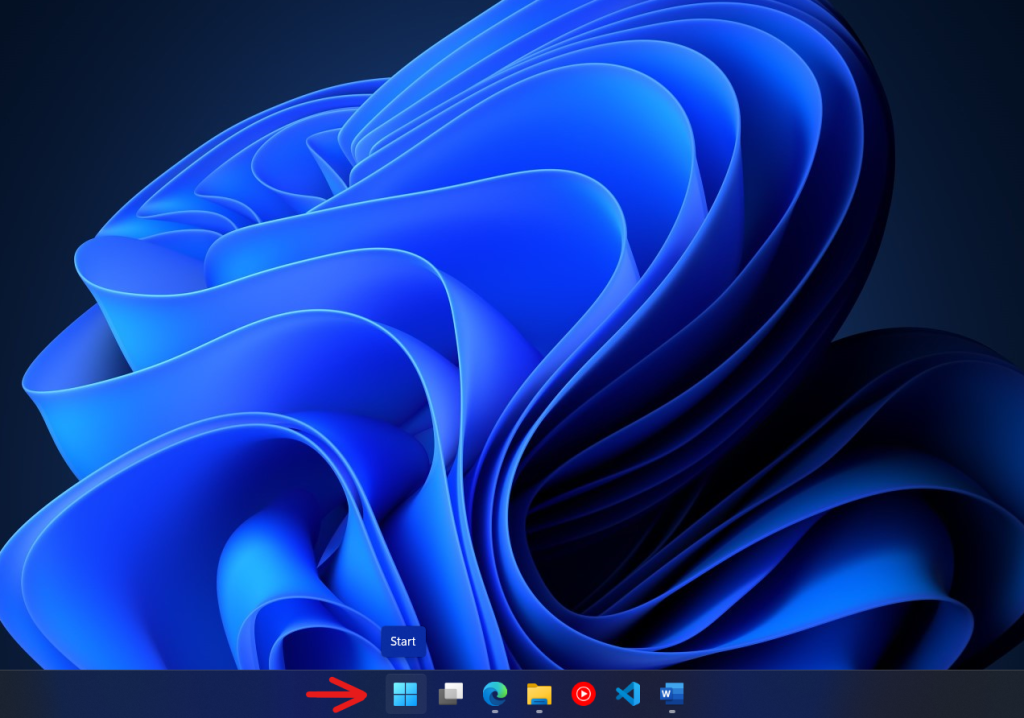In today’s tech-cantered world, where gadgets and gizmos are part of our daily routine, this little thing often goes unnoticed but can make a big difference. Have you ever wondered why drives run faster on one computer and slower on another with the exact specifications? Or why your fancy new printer doesn’t connect properly to your old laptop? Well, the answer lies in the USB version of your devices. It is easy to determine your device’s exact version and can make quite a difference when buying new hardware or figuring out problems with your USB devices.
Table of Contents
What are the Different Versions of USB?
USB technology has evolved, resulting in different generations or versions of USB ports. These versions offer varying data transfer speeds, power delivery capabilities, and compatibility. The most common USB versions include:
- USB 1.0/1.1: These were the first iterations of USB technology and offered data transfer rates of up to 12 Mbps (megabits per second). They are now considered outdated and are rarely found in modern computers and devices.
- USB 2.0: This version improved data transfer speeds significantly, reaching up to 480 Mbps. USB 2.0 ports are still found on many older computers and devices but have largely been superseded by newer versions.
- USB 3.0/3.1 Gen 1: USB 3.0 brought a significant leap in performance, offering data transfer rates of up to 5 Gbps (gigabits per second). This version is also known as USB 3.1 Gen 1 and is denoted by blue-colored ports.
- USB 3.1 Gen 2: Building on the foundation of USB 3.0, USB 3.1 Gen 2 further enhanced data transfer speeds to 10 Gbps. Ports for this version are often colored red.
- USB 3.2: This version introduced even higher transfer speeds by utilizing multiple data lanes. USB 3.2 Gen 1×1 offers 5 Gbps per lane, while USB 3.2 Gen 2×1 offers 10 Gbps per lane.
- USB 4: The latest major iteration of USB technology, USB 4, offers a range of improvements, including data transfer speeds of up to 40 Gbps and enhanced power delivery. USB 4 is compatible with Thunderbolt 3 technology.
Ways to Find USB Versions
You have a slew of options when looking for different ways to find the USB version of your device. They are:
- Physical Inspection: Examine the USB ports on your computer. USB ports are usually labeled with their respective versions. Look for color coding; for instance, USB 3.0 ports might be blue, USB 3.1 Gen 2 ports could be red, while others may be black or white. Also, another great way to determine the version aside from the color codes is the number of pins on the port. USB 3.0 has 9 pins on the port, while USB 2.0 has 4 pins.
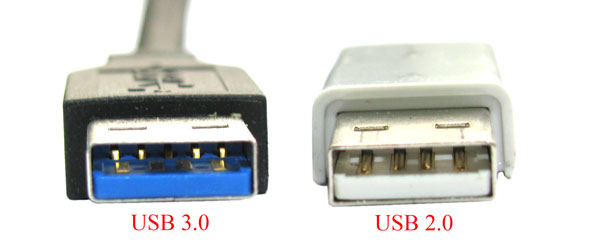
- Device Manager (Windows): On a Windows PC, you can use the Device Manager to identify USB versions. Right-click the “Start” button, select “Device Manager,” and expand the “Universal Serial Bus controllers” section. You’ll find entries such as “USB 3.0 Extensible Host Controller.” These entries indicate the USB versions.
- Software Tools: Some third-party software tools can provide detailed information about your computer’s hardware, including USB versions. Be cautious when downloading and using such tools, though, as they might come from untrusted sources.
How to determine the USB Version on Windows 11?
Windows provides a simple way to quickly know your device’s USB capabilities. Below is a step-by-step guide on how to determine which version of USB your device is capable of handling.
Step 1: Press the Windows Key on your keyboard or click on the start button
Step 2: In the top search bar, type ‘Device Manager.’ From the search results, open the Device Manager
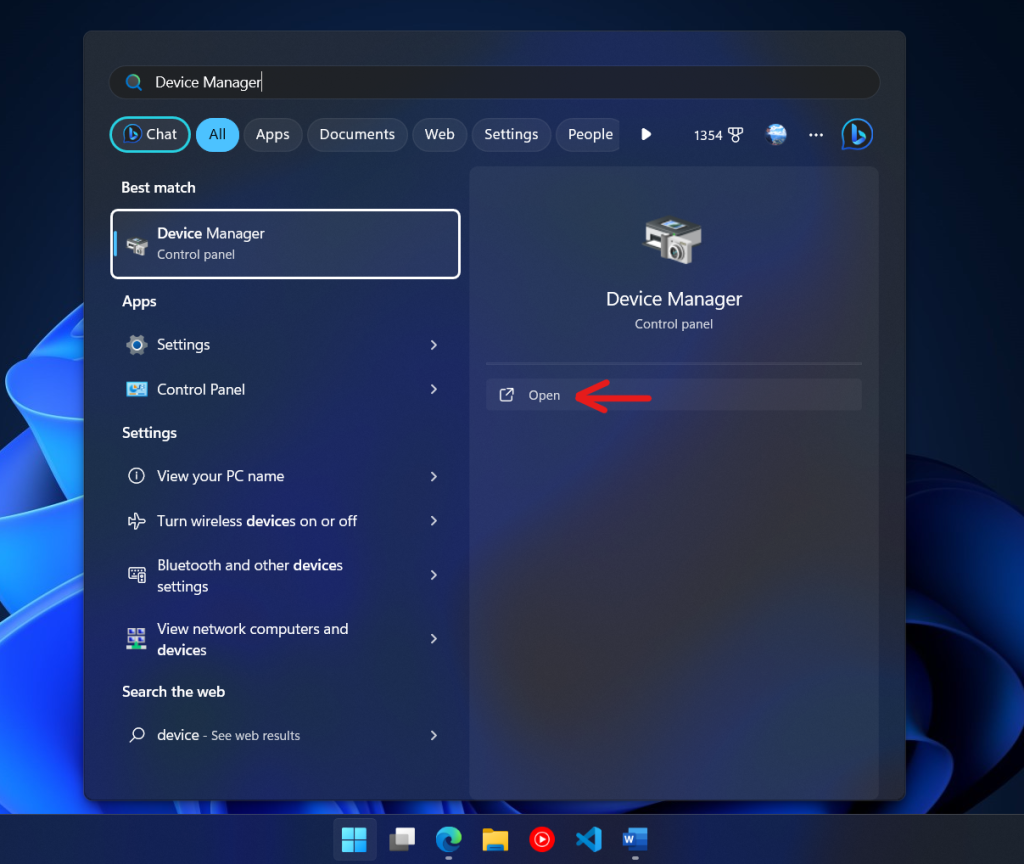
Step 3: Navigate down to ‘Universal Serial Bus Controllers’. Click on the category to expand it and reveal its enclosed components.
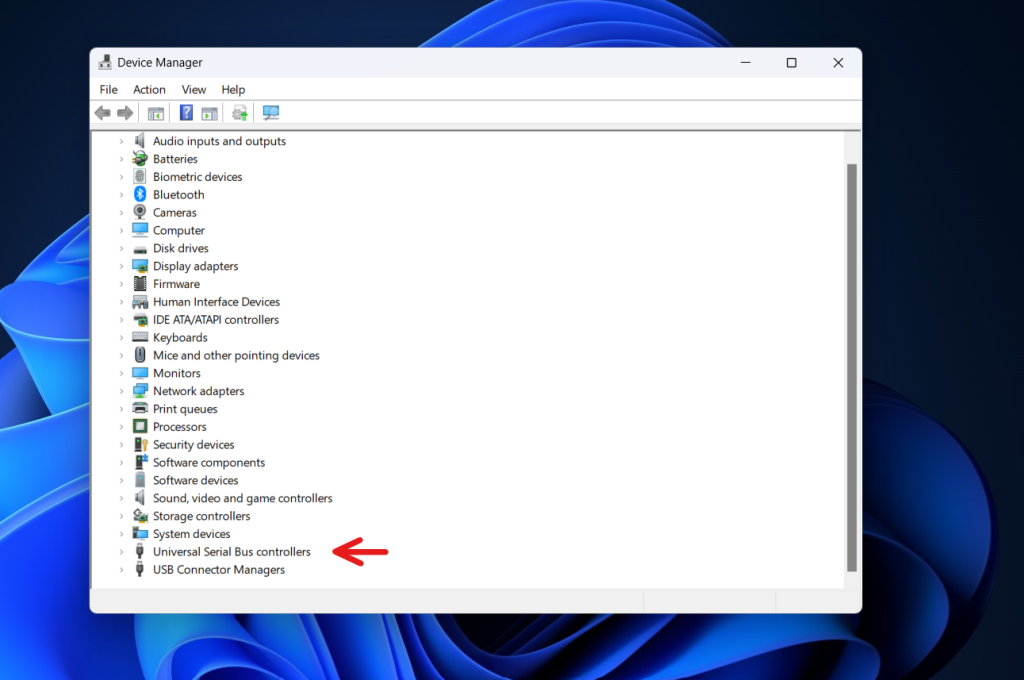
Step 4: You can see two highlighted sets of highlighted rows here, the eXtensible Host controllers and the USB Root Hubs. The row you need to look out for is the Host Controllers row.
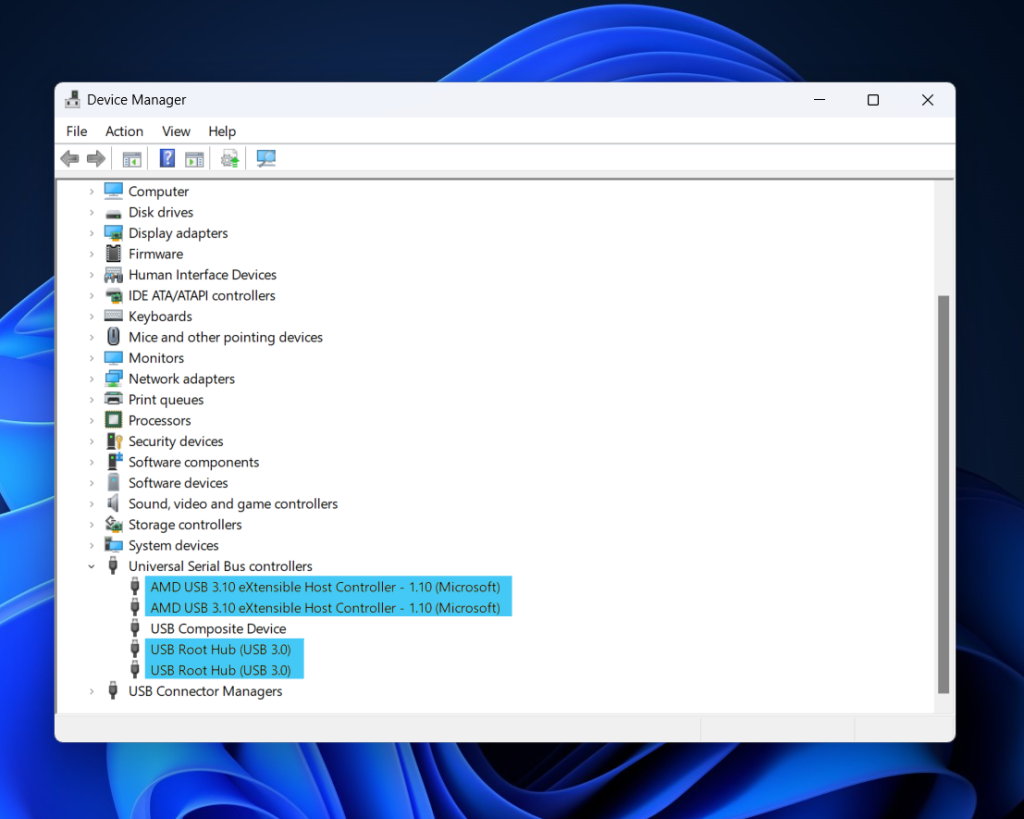
Step 5: Open the Host Controller dialog box (AMD USB 3.0 eXtensible Host Controller in this case) by double-clicking on it to learn additional information, such as driver details, and to choose if it can be turned off to save power.
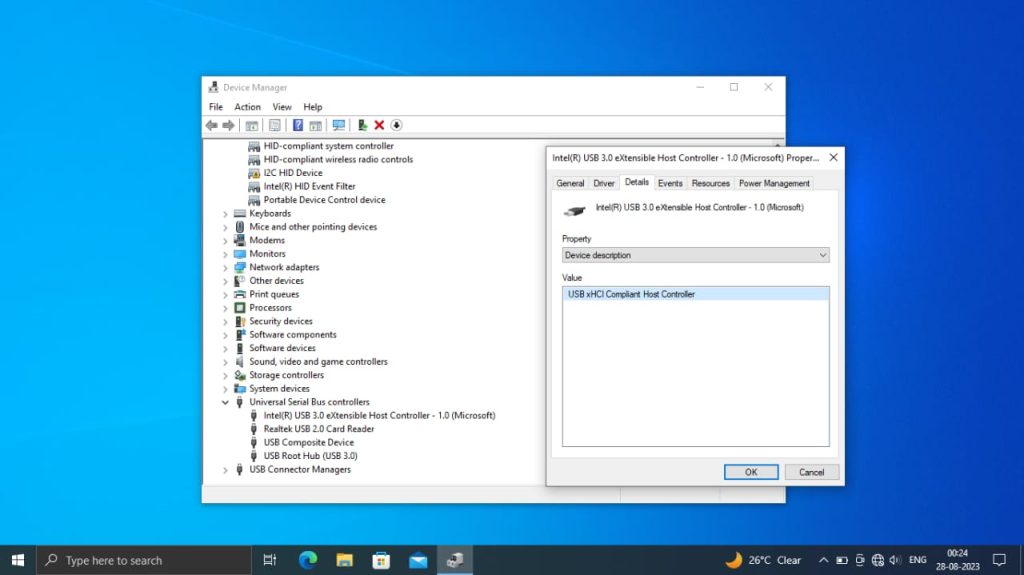
There you go! The procedure to know your USB Version is straightforward in Windows 11.
How to know USB Version in Windows 10?
Step 1: Go to the start button on the taskbar by using the mouse pointer or by pressing TAB on the desktop.
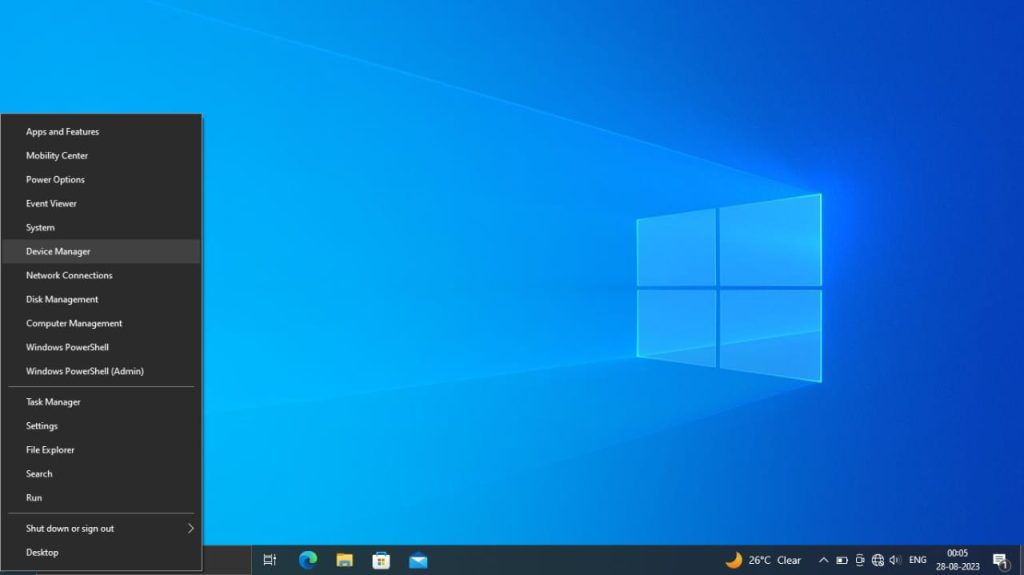
Step 2: Right-click on the Start button to reveal the utility menu. Alternatively, you can press Windows + X to show this context menu.
Step 3: Select Device Manager from the context menu. The Device Manager will open up.
(Pro tip: You can use the combination Windows + X, then press ‘M’ to simplify the process and open the Device Manager directly.)
Navigate down to ‘Universal Serial Bus Controllers.’ Click on the category to expand it and reveal its enclosed components
Step 4: Open the Host Controller dialog box (Intel® USB 3.0 eXtensible Host Controller in this case) by double-clicking on it to learn additional information, such as driver details, and to choose if it can be turned off to save power.
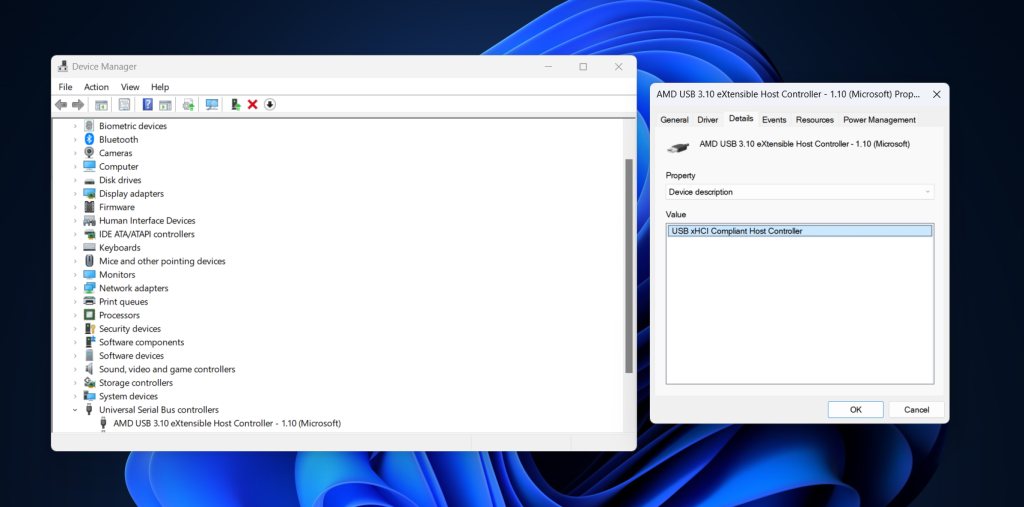
That’s it! You can find the USB version in a very similar way to Windows 11.
However, There’s A Catch!
While it is easy to find the version of your USB port using the above method, they may not be accurate. It is important to note that manufacturers often have higher version controllers hooked up with lower version ports in their devices. In basic terms, that means while your device (say, a laptop) only has physical USB 2.0 ports, it may have chipset support for USB 3.0 and even higher ports! The maximum supported by the chip is what you’ll see in the Device Manager. This is especially true for SoC (System on Chips).
In many electronic devices, not just computers, you might find some parts or features that are there but not used. To avoid confusion, these unused bits usually come with a method to switch them off. This can be done by connecting specific pins to the ground or permanently adjusting settings in the device’s firmware or BIOS. Sometimes, manufacturers might skip this step, either because they need help to do it quickly, they didn’t plan for it, or they removed it quickly to save space or cut costs.
That being said, physical inspection may be unreliable too if you wish to know the exact version of your ports because many manufacturers don’t follow the visual norms for USB ports since they’re not mandatory, meaning that generations of ports may not be color-coded the right way, which may end up as even more confusing. There could also be a lack of the SuperSpeed branding (the SS alongside the port) on the newer version, as USB-IF has officially moved to a new standard of USB branding.
The Definite Solutions
You can accurately determine the exact USB versions in two ways without having to go over the confusing ifs and buts of the other methods.
- Product Documentation: The best bet (and arguably the easiest) to know your precise USB version is to look at the product specifications from the manufacturer’s official documentation for your product, as they clearly state the version of the physical port used. If you have a laptop, searching the user manual by the model number on the manufacturer’s website should be your go-to method. If you have a desktop computer, you can still know the USB version by finding the model of your motherboard and subsequently searching appropriate user manuals for them on their manufacturer’s website.
- Third-Party Software: There’s a lot of freeware out there that can help you in finding out your USB version. Microsoft’s official SDK contains USB View, a tool to determine various port specifications in depth. Apart from that, there are other tools, such as USB TreeView or USB DeView, that can be helpful.
Closing Words
USB nowadays is our lifeline. This technology has changed over time, with different versions that offer faster speeds and better power. Knowing your device’s USB version helps you use things like external hard drives and printers more efficiently. Finding the exact port version could help you a lot when diagnosing issues with your USB devices and, in general, knowing your system’s capabilities. With reliable information on hand, you’ll have an easy time fixing problems and buying new compatible hardware for your computers, and also save a lot of that head-scratching.


